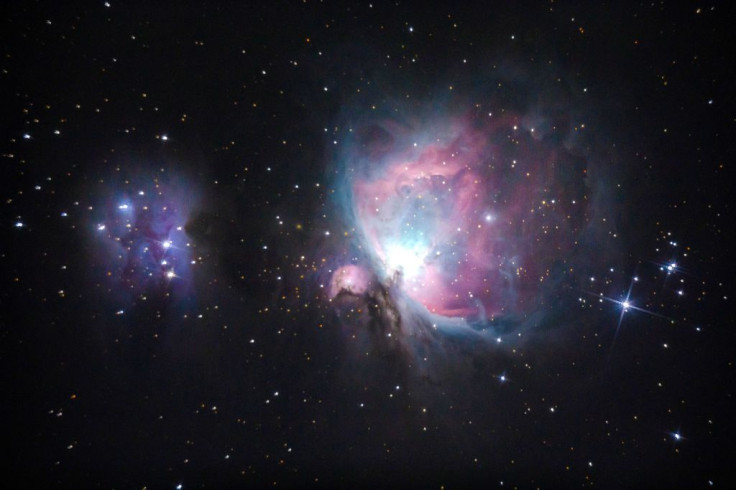NASA's Hubble Captures Stunning Orion Nebula In Most Detailed Image Yet [PHOTO]

NASA's Hubble Space Telescope has captured the most detailed image yet of the Orion Nebula, one of the most observed objects in the night sky.
On its official Twitter page, NASA shared a stunning image of the Orion Nebula showing the turbulent star formation region in all its glory. The "sharpest view" of the nebula revealed "never-before-seen stars, swirls of gas shaped by massive stars born in the giant stellar nursery, and dusty disks around young stars where planets might also be forming."
Located 1,500 light-years away, the Orion Nebula is the nearest star-forming region to the Earth. According to the Hubble website, this latest image of the Orion Nebula taken by the Advanced Camera for Surveys (ACS) aboard the Hubble shows over 3,000 stars of various sizes, some of which had never been observed in visible light. Astronomers pieced the image together using 520 photos from the Hubble that were taken in five colors between 2004 and 2005.
In the middle of the image is a bright central region where four of the nebula's largest stars, called Trapezium, can be found. The stars, whose name comes from their trapezoid pattern arrangement, release enough ultraviolet light to create a cavity within the Orion Nebula and affect the growth of hundreds of smaller stars.
#HubbleClassic The sharpest view of the Orion Nebula ever captured by Hubble revealed never-before-seen stars, swirls of gas shaped by massive stars born in the giant stellar nursery, and dusty disks around young stars where planets might also be forming: https://t.co/I3sXeqwavY pic.twitter.com/wf0jiX8NP3
— Hubble (@NASAHubble) January 29, 2019
The Trapezium stars are surrounded by younger stars who still have disks of material encircling them. Called the protoplanetary disks or "proplyds," the disks are described as the building blocks of solar systems.
In the upper left of the image is the glowing M43, which scientists call a mini Orion Nebula. Unlike its massive counterpart, however, only one massive young star is shaping M43's landscape.
Dense and dark pillars of dust and gas can be seen next to M43. These pillars, which point toward the Trapezium, are resisting erosion from the Orion Nebula's center region's intense ultraviolet light.
Myriad brown dwarfs can also be spotted in the detailed Hubble image, appearing as faint red stars near the bottom. Observed for the first time in visible light, the brown dwarfs are cool objects that are deemed not big enough to be ordinary stars. Unlike our Sun, these "failed stars," as they are sometimes called," cannot sustain nuclear fusion in their cores.
Meanwhile, new research published in the journal Nature found that wind produced by a newborn star is disrupting the formation of new stars. Using observations from NASA's SOFIA, the strong stellar wind from Theta1 Orionis C (θ1 Ori C) has blown away the material needed to form new stars.
“The wind is responsible for blowing an enormous bubble around the central stars,” Cornelia Pabst, a Ph.D. student at the University of Leiden in the Netherlands and the lead author on the paper, explained. “It disrupts the natal cloud and prevents the birth of new stars.”
A newborn star in the Orion Nebula is creating a powerful wind that is clearing out the material needed to form new stars. This discovery is helping us understand the origins of the stars we see today, and those that may form in the future. https://t.co/CmsFXHndCg #AAS233 pic.twitter.com/nFGhcvG4Is
— SOFIAtelescope (@SOFIAtelescope) January 7, 2019
A stellar wind created by a newborn star in the Orion Nebula is blowing a bubble — preventing more stars from forming nearby. Until now, scientists thought that other processes, like supernovae, were responsible for regulating forming stars. More: https://t.co/XsPFezRmsm #AAS233 pic.twitter.com/jrVM8Uw2DS
— SOFIAtelescope (@SOFIAtelescope) January 7, 2019
© Copyright IBTimes 2025. All rights reserved.





















